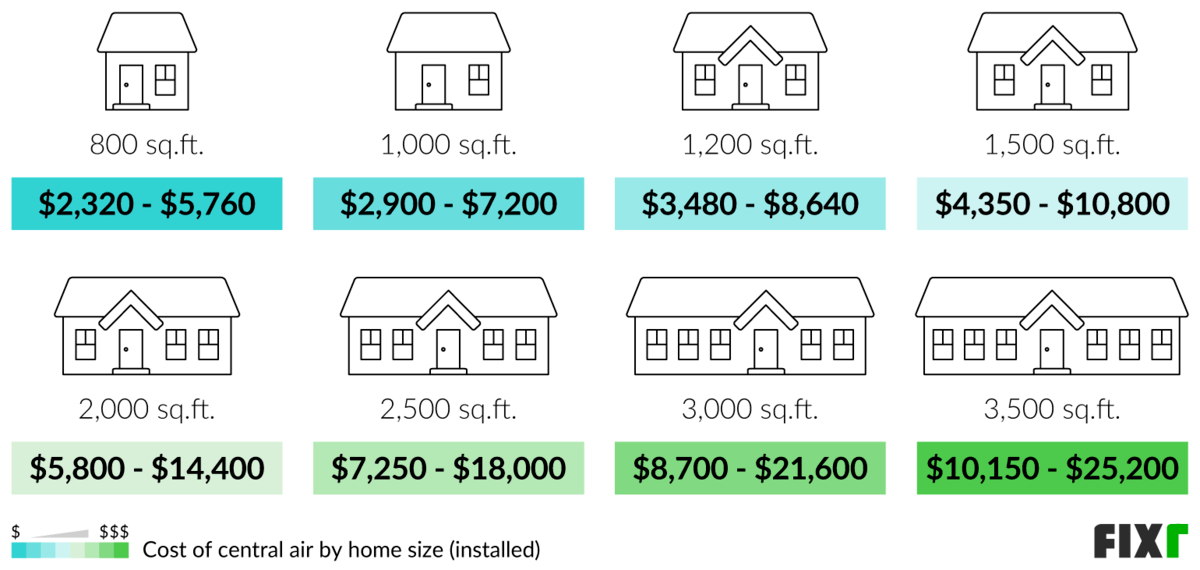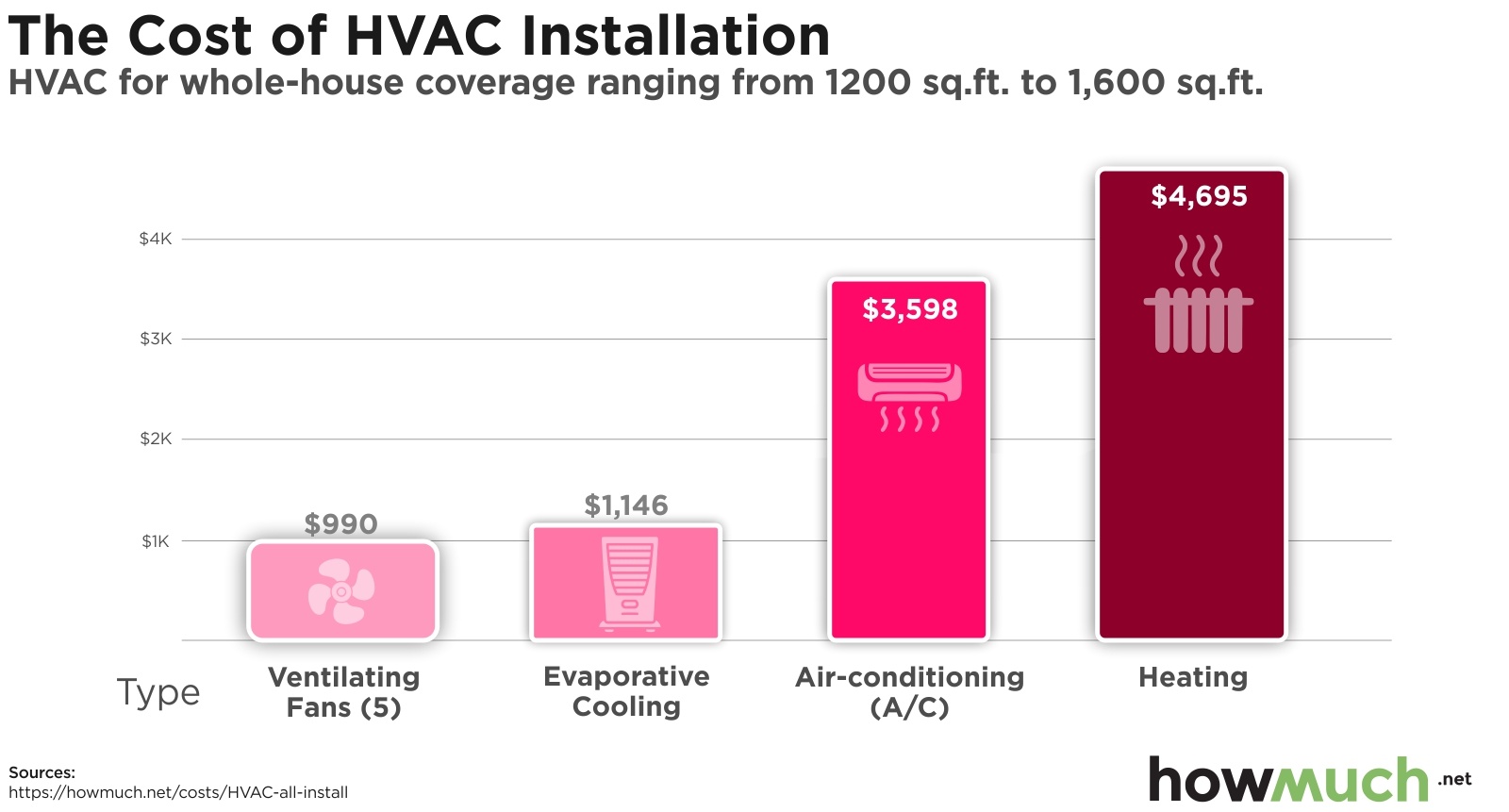Cost Of New Ac Unit For 1500 Sq Ft House

Understanding the Cost of a New AC Unit for a 1500 Sq Ft House: A Comprehensive Guide
Replacing your air conditioning system is a significant investment. For a 1500 sq ft house, the cost can vary considerably depending on several factors. This article breaks down the costs involved, explores energy efficiency ratings, and touches upon the skilled labor market driving these expenses. Whether you're a homeowner planning an upgrade, an HVAC student learning the ropes, or an employer tracking industry trends, this information will prove valuable.
Key Cost Factors: System Type, SEER Rating, and Installation
The most influential factors affecting the price of a new AC unit are the type of system, its Seasonal Energy Efficiency Ratio (SEER) rating, and the complexity of the installation. Let's examine each:
- System Type: Traditional split systems (outdoor condenser and indoor air handler) are generally the most common and cost-effective. Ductless mini-split systems, while offering zoning capabilities, tend to be more expensive upfront. Package units, which combine all components in one outdoor unit, are another option but might require significant ductwork modifications.
- SEER Rating: The higher the SEER rating, the more energy-efficient the unit, and generally, the higher the initial cost. SEER ratings range from 13 to 28. While a higher SEER rating translates to lower energy bills over time, the upfront investment can be substantial. A unit with a 16 SEER rating is often a sweet spot, balancing efficiency and cost.
- Installation Complexity: A straightforward replacement of an existing unit will be less expensive than a new installation that requires ductwork, electrical upgrades, or modifications to the home's structure. Factors such as accessibility to the outdoor unit location and the complexity of running refrigerant lines also impact labor costs.
Typical Cost Breakdown for a 1500 Sq Ft House
For a 1500 sq ft house, you'll likely need an AC unit with a capacity of 2.5 to 3 tons (30,000 to 36,000 BTUs). Here’s a general cost range:
- AC Unit (2.5-3 tons, 14-16 SEER): $3,500 - $6,500
- Installation Labor: $1,500 - $3,500
- Additional Costs (ductwork modifications, electrical work, permits): $0 - $1,500 (This can vary significantly)
- Total Estimated Cost: $5,000 - $11,500
These are just estimates, and it's crucial to get quotes from multiple HVAC contractors in your area for a precise assessment. Geographic location significantly influences labor costs and permit fees. Cities with a higher cost of living will generally have higher HVAC installation rates.
Impact of Energy Efficiency Ratings (SEER) on Long-Term Costs
While a higher SEER rating increases the initial cost, it leads to significant savings on your energy bills over the unit's lifespan. Consider this example:
Assume you choose between a 14 SEER unit and a 18 SEER unit for your 1500 sq ft home. The 18 SEER unit might cost $1,500 more upfront, but it could reduce your annual energy consumption by 20-30%. Depending on your climate and electricity rates, this could translate to hundreds of dollars in savings per year. Over a 15-year lifespan, the higher SEER unit could pay for itself and then some.
To calculate potential energy savings, use online SEER calculators and consult with HVAC professionals. They can assess your home's insulation, climate, and energy usage to determine the most cost-effective SEER rating for your needs.
The HVAC Labor Market: Skills Shortage and Rising Costs
The HVAC industry faces a significant skills shortage, driving up labor costs. The Bureau of Labor Statistics projects strong growth for HVAC technicians and mechanics in the coming years. This demand, coupled with a limited supply of qualified professionals, means that skilled HVAC technicians are in high demand and can command premium rates.
According to recent data, the median annual salary for HVAC technicians is around $50,000, but experienced technicians with specialized skills and certifications can earn significantly more, often exceeding $70,000 or even $80,000 per year. Location also plays a key role, with states like California, New York, and Alaska offering some of the highest salaries due to high cost of living and strong demand.
The Value of Certifications: NATE, EPA 608, and Beyond
For aspiring and experienced HVAC technicians, certifications are crucial for career advancement and increased earning potential. Some key certifications include:
- NATE (North American Technician Excellence): NATE certification demonstrates a technician's competency in specific areas of HVAC, such as installation, service, and repair. Employers often prefer NATE-certified technicians, and certification can lead to higher pay.
- EPA 608 Certification: This certification is mandatory for technicians who handle refrigerants. It demonstrates knowledge of proper refrigerant handling procedures and environmental regulations.
- HVAC Excellence: Offers a range of certifications for different skill levels and specialties within the HVAC field.
Obtaining these certifications requires training, testing, and ongoing professional development. However, the investment in certification can pay off handsomely in terms of job opportunities, salary increases, and career advancement.
Career Paths in HVAC: From Apprentice to Business Owner
The HVAC industry offers diverse career paths, from entry-level apprenticeships to owning your own HVAC business. Here are a few common career trajectories:
- Apprentice: Entry-level position involving on-the-job training under the supervision of experienced technicians.
- HVAC Technician: Installs, services, and repairs HVAC systems in residential and commercial settings.
- HVAC Service Manager: Supervises a team of technicians, schedules jobs, and ensures customer satisfaction.
- HVAC Sales Engineer: Designs and sells HVAC systems to clients, requiring technical knowledge and sales skills.
- HVAC Business Owner: Manages all aspects of an HVAC business, including operations, marketing, and finance.
Real-world examples illustrate these paths. Consider Sarah, who started as an apprentice after graduating from a technical college. She earned her NATE certification after two years and quickly became a lead technician. Now, five years later, she's pursuing her HVAC Excellence certification and is on track to become a service manager. Or consider David, who worked as an HVAC technician for 10 years before starting his own business. He leveraged his technical expertise and business acumen to build a successful company, employing several technicians and serving a large customer base.
Tips for Employers: Attracting and Retaining Skilled HVAC Technicians
Given the current skills shortage, employers need to be proactive in attracting and retaining skilled HVAC technicians. Here are some strategies:
- Offer Competitive Salaries and Benefits: Ensure your compensation package is competitive with other employers in the area. Consider offering health insurance, retirement plans, and paid time off.
- Provide Training and Development Opportunities: Invest in training programs and certifications to help your technicians improve their skills and advance their careers.
- Create a Positive Work Environment: Foster a supportive and collaborative work environment where technicians feel valued and appreciated.
- Offer Opportunities for Advancement: Provide clear career paths and opportunities for technicians to move into leadership positions.
- Invest in Technology: Equip your technicians with the latest tools and technology to help them work more efficiently and effectively.
By investing in their workforce, employers can attract and retain top talent, ensuring the long-term success of their business.
Conclusion: Making Informed Decisions About Your AC System and HVAC Career
The cost of a new AC unit for a 1500 sq ft house depends on numerous factors, including system type, SEER rating, installation complexity, and geographic location. By understanding these factors, homeowners can make informed decisions about their investment. For HVAC professionals, certifications and ongoing training are essential for career advancement in a competitive job market. And for employers, attracting and retaining skilled technicians requires a commitment to competitive compensation, training, and a positive work environment. As the HVAC industry continues to evolve, staying informed and adapting to new technologies and trends will be crucial for success.










